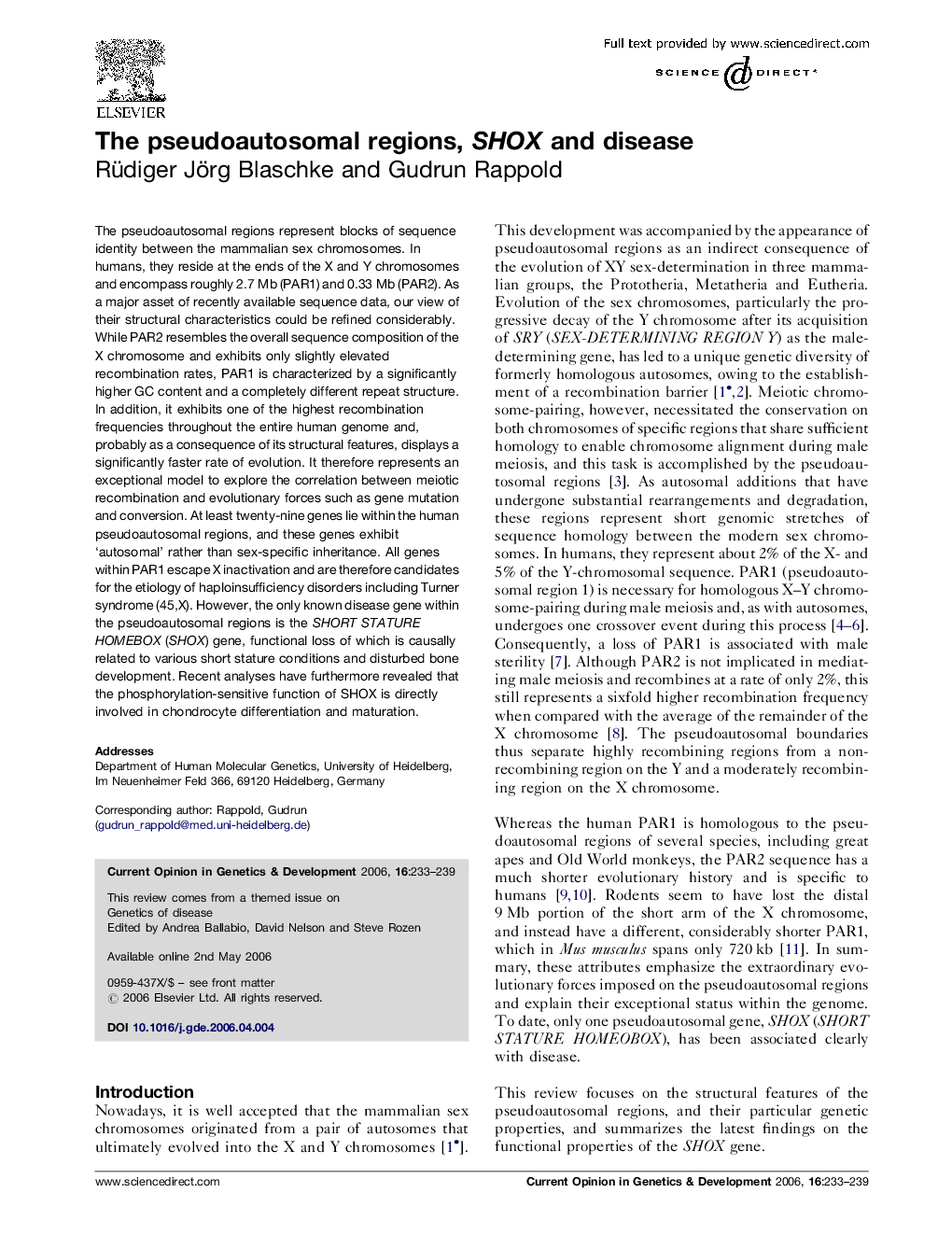| Article ID | Journal | Published Year | Pages | File Type |
|---|---|---|---|---|
| 2785387 | Current Opinion in Genetics & Development | 2006 | 7 Pages |
The pseudoautosomal regions represent blocks of sequence identity between the mammalian sex chromosomes. In humans, they reside at the ends of the X and Y chromosomes and encompass roughly 2.7 Mb (PAR1) and 0.33 Mb (PAR2). As a major asset of recently available sequence data, our view of their structural characteristics could be refined considerably. While PAR2 resembles the overall sequence composition of the X chromosome and exhibits only slightly elevated recombination rates, PAR1 is characterized by a significantly higher GC content and a completely different repeat structure. In addition, it exhibits one of the highest recombination frequencies throughout the entire human genome and, probably as a consequence of its structural features, displays a significantly faster rate of evolution. It therefore represents an exceptional model to explore the correlation between meiotic recombination and evolutionary forces such as gene mutation and conversion. At least twenty-nine genes lie within the human pseudoautosomal regions, and these genes exhibit ‘autosomal’ rather than sex-specific inheritance. All genes within PAR1 escape X inactivation and are therefore candidates for the etiology of haploinsufficiency disorders including Turner syndrome (45,X). However, the only known disease gene within the pseudoautosomal regions is the SHORT STATURE HOMEBOX (SHOX) gene, functional loss of which is causally related to various short stature conditions and disturbed bone development. Recent analyses have furthermore revealed that the phosphorylation-sensitive function of SHOX is directly involved in chondrocyte differentiation and maturation.
